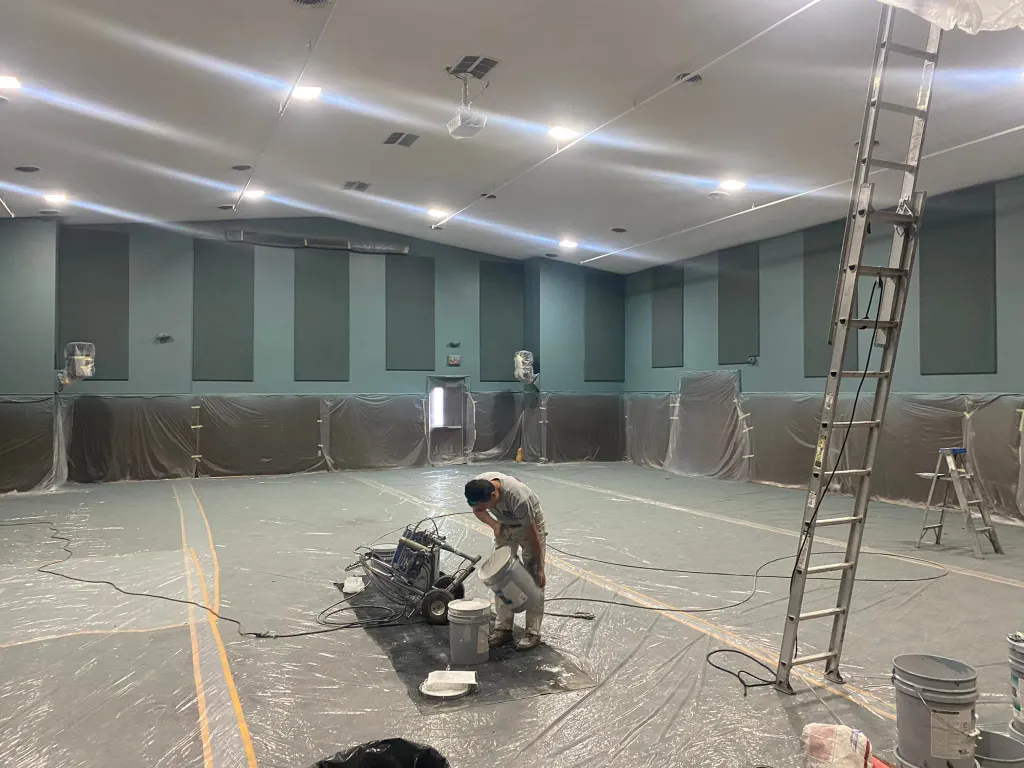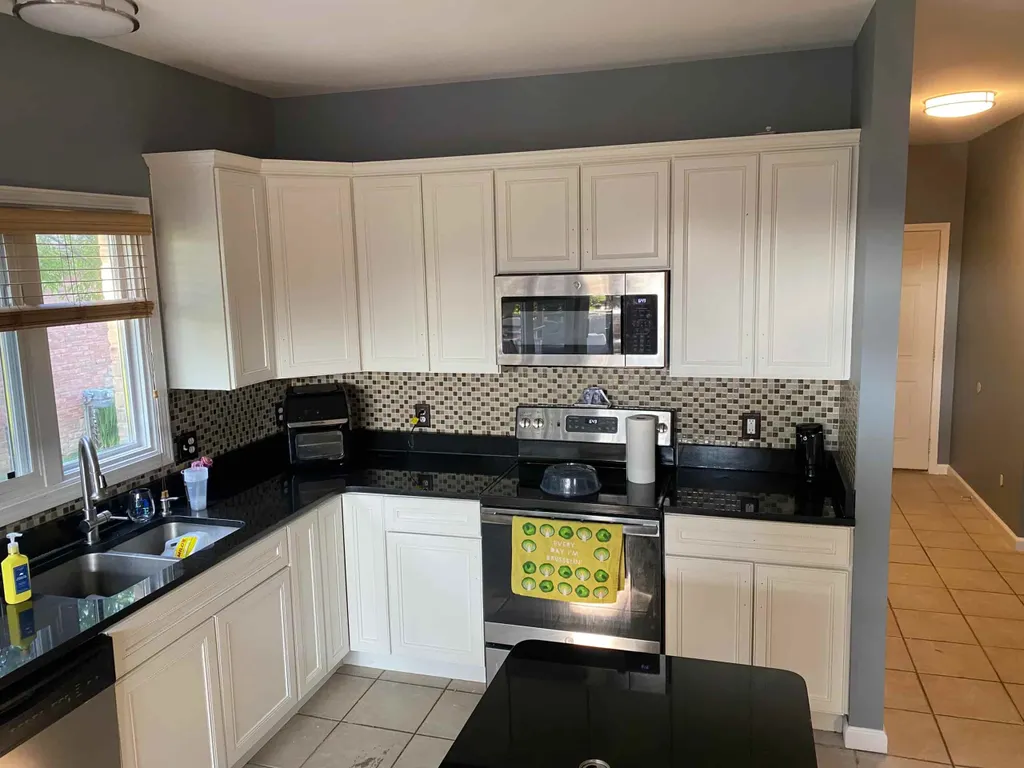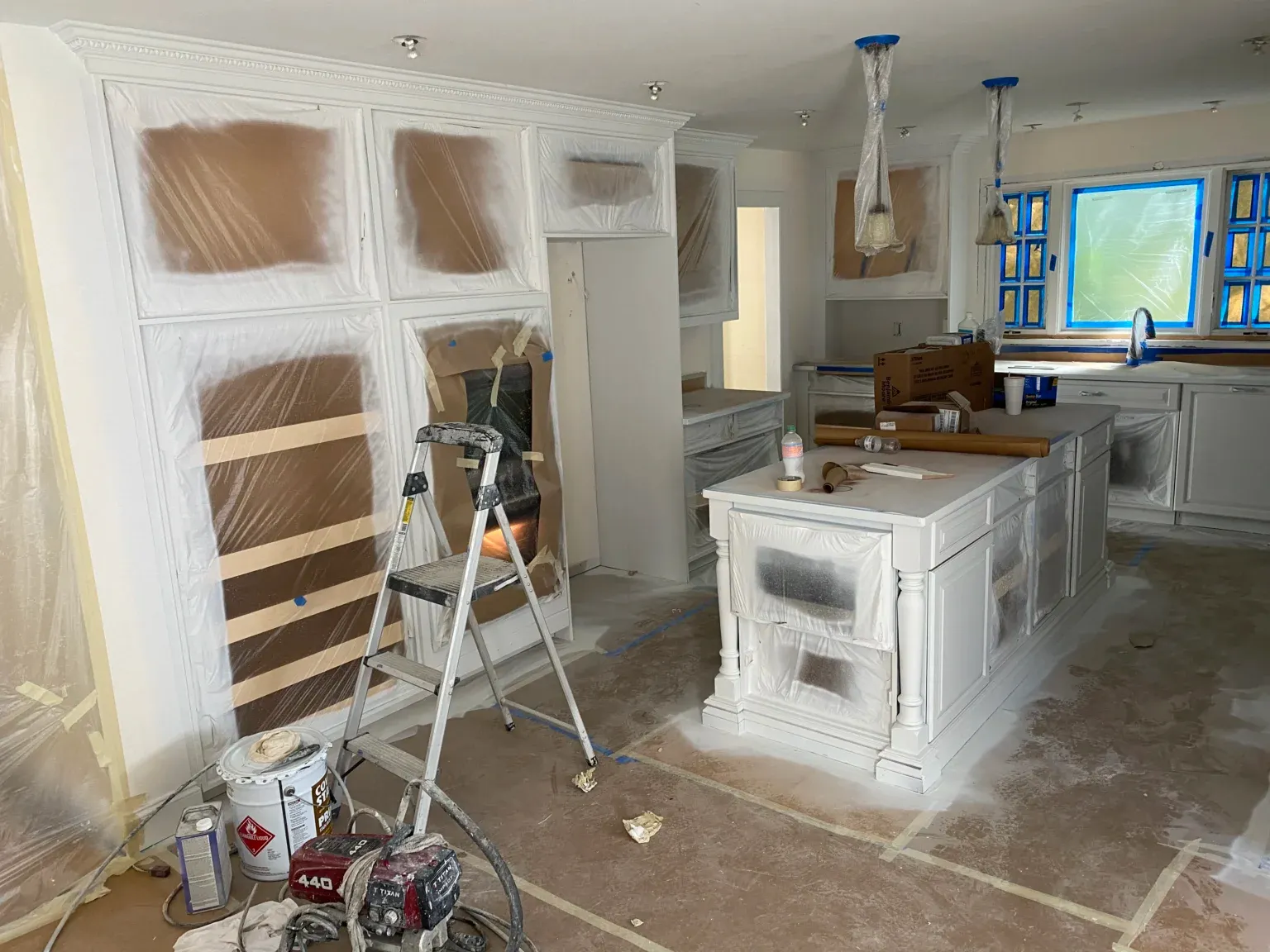A satin finish bounces light, while a matte surface soaks it up. Pick satin for subtle shine and easy cleaning, matte for a soft, low-glare look. Choose the wrong sheen and the room can feel mismatched, highlight flaws, or turn simple wipe-ups into a chore.
Understanding the difference between satin vs matte finish options lets you match each surface to the style and durability it needs. In the next few minutes, you’ll see side-by-side comparisons for walls, trim, and ceilings so you can feel confident on paint-sample day.
Key Takeaways
- Satin offers gentle gloss and wipes clean fast.
- Matte hides small dents and limits glare.
- Matte suits ceilings and quiet bedrooms.
- Satin shines in hallways, trims, and kid zones.
- Match finish to traffic first, style second.
Satin vs Matte Finish: Pros & Cons Breakdown
Satin and matte share the same pigment base; the difference is resin. Higher resin boosts sheen and toughness. Satin lands mid-scale on the sheen level paint chart, while matte hovers just above flat.
| Feature | Satin | Matte |
|---|---|---|
| Appearance | Subtle gloss, light bounce | Soft, low-glare, powdery |
| Durability | High—resists bumps | Moderate—can mark easily |
| Washability | Wipe with soap & water | Gentle wipe, may burnish |
| Best Rooms | Hallways, trim, playrooms | Ceilings, studies, bedrooms |
| Cost | Slightly higher | Slightly lower |
Satin’s tighter film blocks stains and adds depth. Matte hides patched nail holes and diffuses harsh light. Choose based on which flaw matters more: scuffs or surface dips.
Walls: Choosing Between Satin Paint Finish or Matte
Walls greet guests first. With a satin paint finish, daylight glides across drywall, making color glow. Stains wipe away after spaghetti-night splats, perfect for busy hallways. That gloss, though, can spotlight uneven tape lines.
Matte diffuses light for a cozy vibe. It suits libraries, primary bedrooms, or any zone craving calm. Minor dents fade into the background, yet fingertip marks linger longer. Picture a spa bath wrapped in charcoal next to gray tile & wall paint color combinations. Matte keeps the grout pattern center-stage without glare.
High traffic? Satin saves time. Low traffic? Matte sets the mood. If the space pulls double duty, blend them. Matte on broad walls, satin under the breakfast bar; a crew like ours on the interior painting team can cut that line sharp.
Quick Tips
- South-facing wall? Matte tames glare.
- Kid corridor? Satin says, “Scrub me.”
- Accent wall? Sample both before you decide.
Trim and Doors: Matte vs Satin Finish
Trim takes kicks, scuffs, and the odd dog leash. Here the matte vs satin debate leans hard on durability. Satin forms a slick shell. Crayon marks vanish with a damp cloth. That subtle shine also frames walls like a picture.
Matte on trim feels boutique-chic but bruises easily. One suitcase swipe and you’ll need touch-up paint. Love the muted look? Be ready for upkeep. Mixing sheens creates depth: matte walls hugged by satin frames look intentional and polished. See how we split finishes on cabinets over at our cabinet painting page.

Ceilings: Which Finish Is Best?
Look up. Dings, seams, and nail pops hide up there. Flat or matte paint masks them by soaking up light. Glossy ceilings can feel dramatic in flawless drywall, but any ripple flashes like a neon sign.
A satin ceiling rebounds light into corners yet reveals every joint. Unless you’re confident in surface prep, stick with matte overhead. That low sheen calms bright accent walls and keeps focus where you want it—eye level.
When to Use Each Finish – Real-Life Scenarios
- Adult bedroom: matte walls and ceiling create a restful retreat.
- Kids’ playroom: satin walls resist crayon art and snack smears.
- Moisture-prone bath: satin trim pairs with mildew primer for wipe-easy durability.
- Rental hallway: satin everywhere saves money on annual touch-ups.
- Historic dining room: matte ceiling above satin wainscoting shows off period moulding and taps into the uses and benefits of vinyl paint for extra scrubbability.
Comparison Table: Quick Look
| Category | Matte | Satin | ||
|---|---|---|---|---|
| Appearance | Velvety, non-reflective | Gentle gloss, subtle glow | ||
| Durability | Moderate | High | ||
| Cleaning | Light wipe | Scrub-friendly | ||
| Best Use | Ceilings, calm rooms | Trim, busy walls | ||
| Cost | $ (lower) | $$ (slightly higher) |
Real-World Finish Guide
Below are five quick-hit situations and the sheen that shines.
Kitchen Backsplash Wall
Grease splatters appear nightly, so easy cleanup rules. A satin coat resists oil spots and wipes down with a single pass of soapy water. Light bounce brightens what can be a shadowy prep zone. Color stays rich even after countless scrub-downs.
Formal Dining Ceiling
You want the chandelier, not the drywall, to sparkle. Matte absorbs glare and hides subtle waves in older plaster. Guests notice ambiance, not ceiling seams. The soft lid also balances glossy tabletop decor.
Mudroom Bench Trim
Boots, backpacks, and dog leashes collide here daily. Satin’s tougher resin shrugs off scuffs and muddy prints without staining. The slight gloss outlines the bench against matte walls for crisp contrast. Weekend cleaning takes minutes, not hours.
Home Office Accent Wall
Screens throw harsh light that strains eyes. Matte diffuses reflection, creating a calm backdrop behind monitors. Colors read deeper without shine distractions. Productivity climbs when glare drops.
Stairwell Handrail
Hands slide along this rail dozens of times a day, leaving oils behind. Satin delivers a smooth surface that resists fingerprints and cleans fast. Subtle gloss highlights the curve of the railing, adding design punch. Durability meets style on every step.
FAQs
What is the main difference between satin and matte paint finishes?
Satin contains more resin, giving gentle gloss and high scrub resistance. Matte lacks that resin, so it hides flaws but marks sooner.
Is satin or matte better for bathrooms?
Steam and splashes demand washability. Satin’s tighter film blocks moisture stains. Matte works on upper walls if you crave a spa vibe, but expect gentler cleaning.
Can you mix satin and matte finishes in the same room?
Absolutely. Use matte on broad walls and satin on trim or built-ins for depth. Consistent color tones keep sheen, not hue, as the contrast.
Which paint finish hides wall imperfections better?
Matte wins because it diffuses light, masking dents and patched holes. Satin’s reflection can spotlight rough spots.
Is satin paint more expensive than matte?
Usually by a few dollars per gallon. Extra additives raise cost, but the durability can lower long-term touch-up needs. For exterior touch-ups, see our **exterior painting** options.
Conclusion: Final Verdict
The best finish depends on surface and traffic. Matte hides flaws on ceilings and quiet walls. Satin fights scuffs on trim and busy zones. Match sheen to room demands, test samples, and every space will look polished longer. Need expert help? Call Shelby Macomb Painters at 586-991-6555 or email Kris@shelbymacombpainters.com to schedule a color-and-sheen consultation that fits your home and lifestyle.






